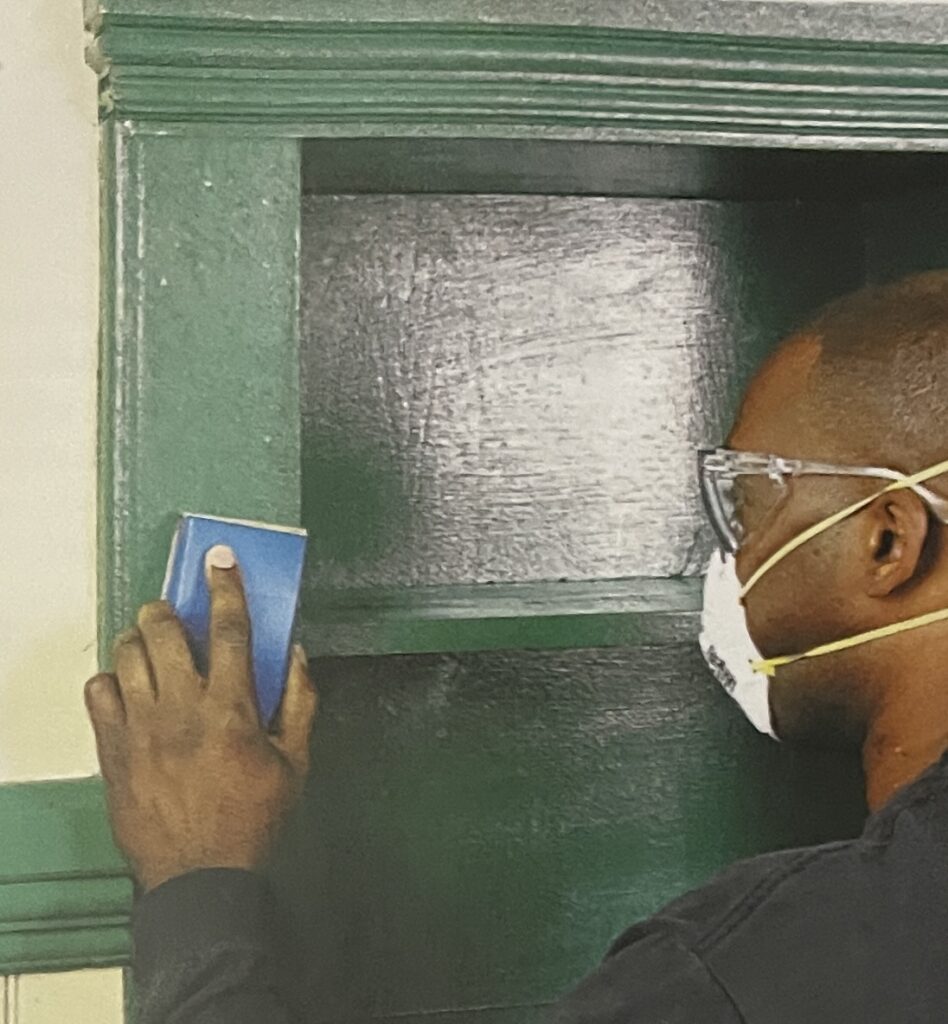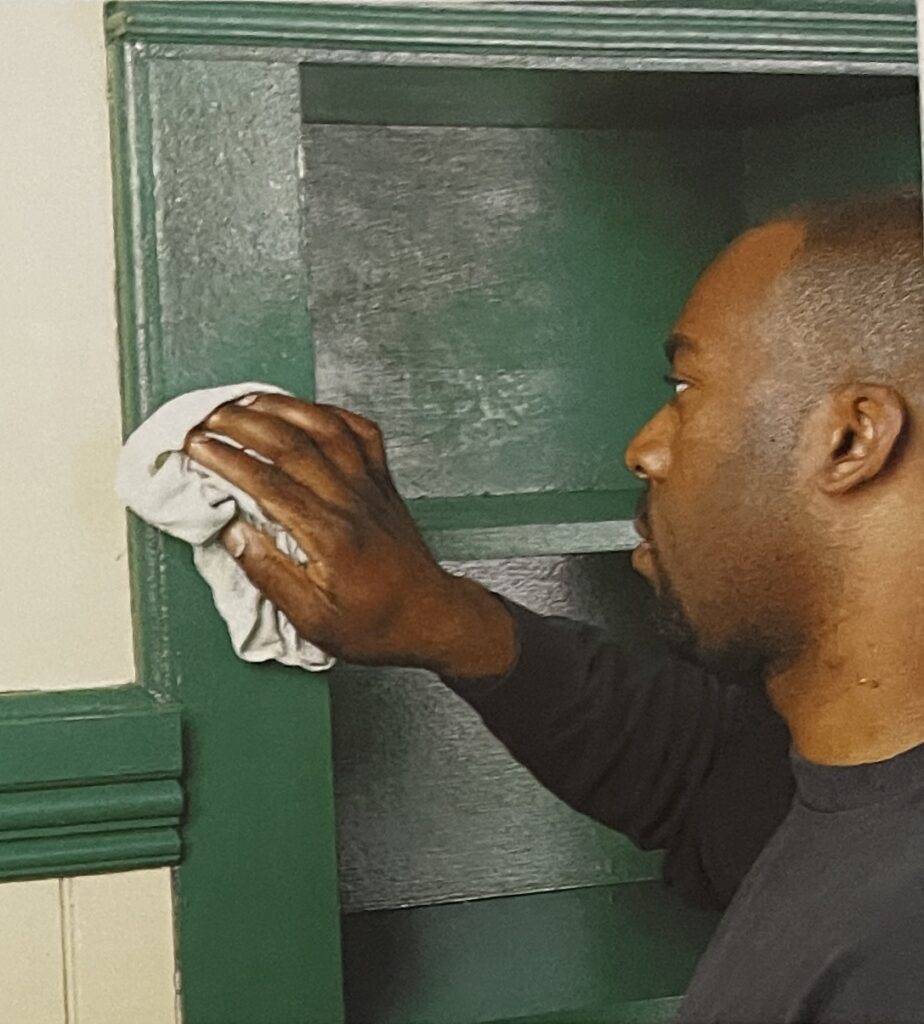Glossy paints dry to a hard, nonporous surface, making it almost impossible for new paint to adhere effectively.
The glossy surface lacks what painters call “tooth,” a slight roughness that gives paint something to cling to. It doesn’t take much effort to create tooth-just sand the surface lightly with either a fine-grit sandpaper or steel wool. Or you can use a chemical deglosser if you have a lot of area to cover or would prefer not to sand. When the entire surface looks dull and ceases to be reflective, it’s ready to paint. To detect glossy areas, shine a flashlight across the surface and see if the light reflects.

1. Fill gaps in trim and baseboard with paintable caulk. After drying, sand all glossy areas lightly with 220-grit sandpaper. Use a sanding block for even sanding on flat surfaces, a brass-wire brush for fluted surfaces.

2. Remove the sanding or brushing residue by wiping it with a damp rag or a tack cloth. You can also wipe down oil-base paint dust with a rag soaked in mineral spirits, which evaporates almost instantly.
High-volume deglossing
While roaming through the paint department, you may see something called liquid deglosser. It can save you some work by eliminating hand sanding, but it won’t remove surface imperfections, which improve by sanding. What it will do is create a surface that the paint can cling to, as long as you apply the paint within the specified time (don’t work too far ahead). It’s also caustic, and the strong fumes are dangerous. If you use it, ventilate the area well, wear neoprene rubber gloves, goggles, and the respirator recommended by the deglosser manufacturer.


Leave a Reply